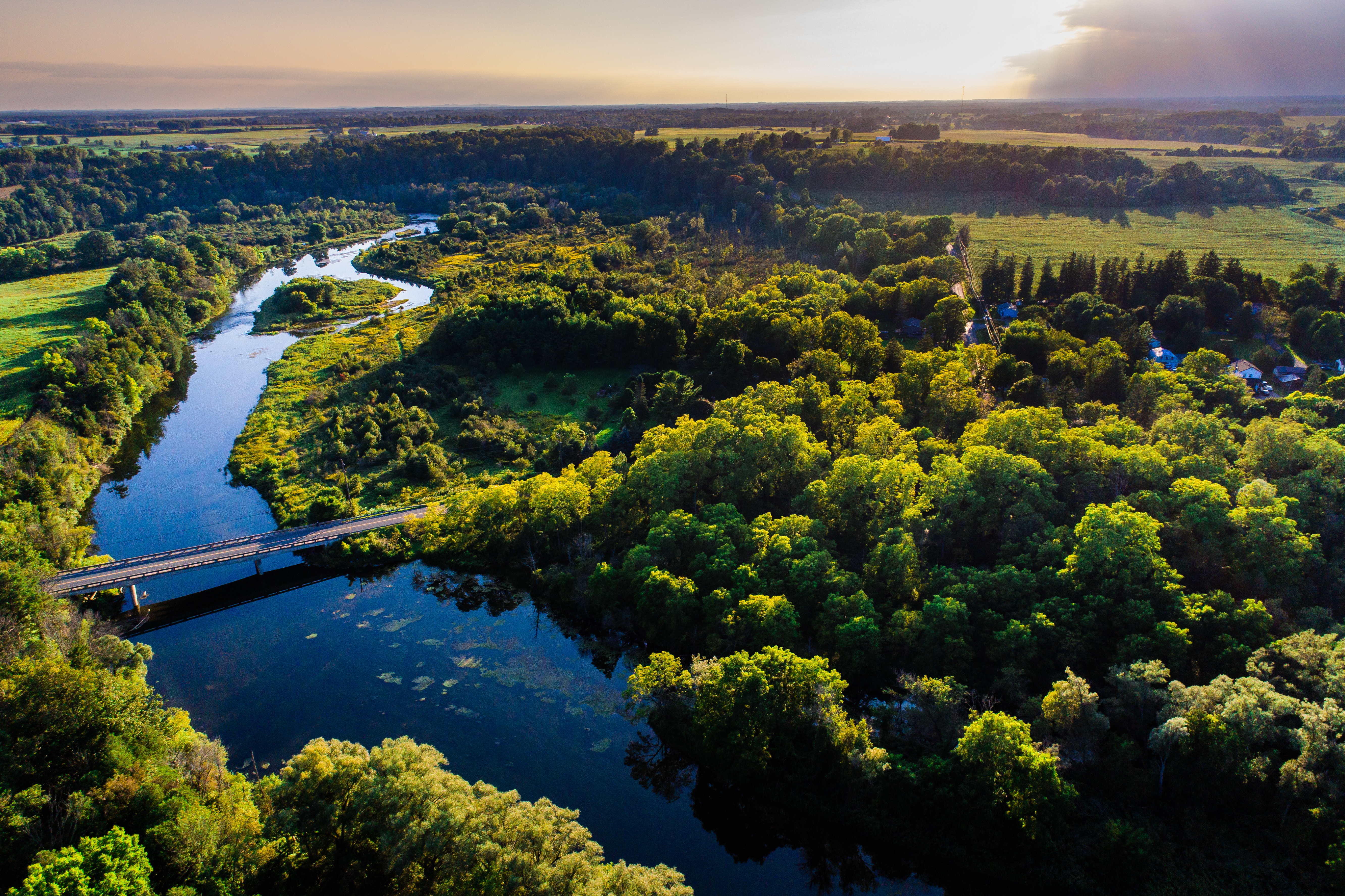Waste Reduction Week blogs

Learn more about a circular economy, waste reduction and recycling during Waste Reduction Week
This page will be updated daily all week with different blogs following the daily themes of Waste Reduction Week. Check out the blogs below, starting with Circular Economy Innovators Monday.
Download the Waste Reduction Week poster with theme days
| Monday, October 16 - Circular Economy Innovators Monday |
||||||||||||||||||||||||||||||||||||
While we all might have the best intentions in diverting waste from landfills, we could probably strive for better. Have you ever took a shortcut by tossing recycling into the garbage? Threw away leftovers instead of saving them or composting or using a green cone? Maybe it was a small omission, like forgetting to rinse out your peanut butter jar? Or maybe you don't even recycle or compost at all? Together, we can all do a better job of working towards zero waste and protecting our environment.
|
||||||||||||||||||||||||||||||||||||
| Tuesday, October 17 - Textiles Tuesday | ||||||||||||||||||||||||||||||||||||
One person’s trash is another person’s treasure!
Bell bottoms, high-waisted jeans, puffy sleeves, chunky sneakers, and headbands, what do these clothing items all have in common? Every single one of them was popular in the past and made a surprising comeback in fashion. So, the next time you go to throw out your old clothes, think twice because you never know when you might want to rock that infinity scarf or low-rise skinny jeans again. If closet space is your issue, you can always try selling them online or donate them to any of the community organizations that accept used clothing donations in Oxford County. You can also get creative with your old clothes-- turn a couple of old shirts into rags, or make your jeans into cut-off short shorts. Well, that last one might be a stretch for some of us, but the point remains, stop throwing old clothes and fabrics into the garbage. Did you know the average Canadian purchases 70 new articles of clothing every year? More concerning is the fact that the average person throws away 37 kilograms of textiles (clothing or fabric) every year, and that 95% of those clothes could have been reused or recycled. Textile waste is taking up valuable space in our landfills. Plastics and textiles go hand-in-hand: every time we use synthetic materials like polyester and nylon, tiny plastic fibres break off and up to 40% of these microfibers end up as ocean plastics. By only washing what really needs to be washed, we can decrease the amount of microfibers entering our waterways and materials will last longer. Oxford County has partnered with Diabetes Canada to reuse and recycle old textiles. You can take them to the Oxford County Waste Management Facility at 384060 Salford Road in Salford. A list of acceptable and unacceptable materials for textile recycling follows below:
Acceptable textile materials
Unacceptable textile materials
Learn more at www.wasteline.ca |
||||||||||||||||||||||||||||||||||||
| Wednesday, October 18 - E-Waste Wednesday | ||||||||||||||||||||||||||||||||||||
Electronic waste, hazardous waste, and innovative recycling
None of these items can go in the trash or be set out to the curb for garbage collection and recycling collection. Here are some ways to curb these problems and keep these harmful products from entering our landfills and hurting our environment. E-wasteFour out of five households have at least one electronic item they want to get rid of. Over time, old electronics can leak toxic elements like mercury and lead, which can be harmful to humans and the environment when not recycled properly. Donating old electronics and giving them a new purpose is always the best option. Maybe that iPod shuffle sitting in your drawer collecting dust still works and has some banging playlists that might appeal to someone and give it new life. Of course, repurposing and donating isn't always an option, so when you toss out your old electronics, please recycle them properly. In Oxford County, you can safely dispose of e-waste at the electronic waste depot at the Oxford County Waste Management Facility at 384060 Salford Road in Salford. City of Woodstock residents can also dispose of e-waste at the City of Woodstock EnviroDepot located at 944 James Street. You can also donate your old mobile phone through CNIB’s Phone It Forward website at phoneitforward.ca to be repurposed for people with sight loss who need them.
Hazardous WasteHousehold hazardous waste is more common than you might think. Whether it’s mixed materials, (oil and gas, antifreeze and oil, etc.) empty aerosol containers, or paint cans, hazardous waste lives in your home and needs to be disposed of properly. Keeping hazardous waste out of the garbage is important to prevent chemicals from leeching out and contaminating our soil and groundwater. Hazardous substances should also never be flushed or poured down the drain where they can enter the sewage system. Hazardous waste can be recycled or disposed of properly at any of the three hazardous waste depots in Oxford County. You can take these materials to the Oxford County Waste Management Facility in Salford, the Tillsonburg Transfer Station and the EnviroDepot in Woodstock. If you are unsure about what items are accepted at the hazardous waste depots, you can find a complete list here.
Recycling InnovationNothing is stopping you from getting innovative with your recycling. For example, avocados can be turned into leather, plastic can turn into clothing, or you can create a beautiful piece of art using your old scrap metal. This is where you can let your creativity shine and your imagination run wild. Donating, repurposing, or selling your items is also a great way to divert waste from the landfill. ReuseapalooZaha in Embro is a shining example of how a community can come together to find hidden treasures and save perfectly good items from heading to the curb. ReuseapalooZaha is where you can bring your old and unwanted books, household items, clothes, and tools and swap them with your neighbours. You can donate, or go to shop, or do both. Learn more about ReusesaplooZaha at www.reuseapaloozaha.ca. Other great examples of this are community yard sales, swap meets and swap and share groups on Facebook. |
||||||||||||||||||||||||||||||||||||
| Thursday, October 19 - Plastics Thursday | ||||||||||||||||||||||||||||||||||||
Why we tolerate paper straws
Plastics are winding up in our oceans at an alarming rate. Scientists predict that by 2050, the oceans will have more plastics than fish, by weight. Nearly half of plastics produced are for packaging, used once, and then thrown away. Stopping this problem is going to take a global team effort. We can all help a little bit by doing simple things like bringing reusable bags when we go shopping, carrying reusable steel or ceramic mugs for your water or coffee, and purchasing fresh fruits and veggies from your local farmers market and of course, one way to help is to tolerate those pesky paper straws. Oxford County started a Film Plastic Recycling Program in 2020 at four depot locations: Waste Management Facility, Tillsonburg Transfer Station, Beachville Fire Hall and the Woodstock EnviroDepot. Residents can drop off film plastic at any of the above locations free of charge. Another way the County is looking to divert plastics from the landfill is through the Agricultural Plastics Diversion Pilot Project. Local farmers generate approximately 300 tonnes of bale and silage wrap annually. With the pilot program, local farmers can dispose of plastics like silage bags, bunker covers, bale wraps, fertilizer bags, and salt bags (black, blue, and white). The program provides local farmers with an alternative to dispose of farm plastics that may have otherwise ended up in a burn pile or the landfill. For a complete list of acceptable and unacceptable materials for the Film Plastic Recycling Program and Agricultural Plastics Pilot Project and more information on all of the diversion programs offered by the County, head to the Special Recycling page at www.wasteline.ca. This blog completed with information from www.circulareconomymonth.ca |
||||||||||||||||||||||||||||||||||||
| Friday, October 20 - Food Waste Friday | ||||||||||||||||||||||||||||||||||||
Are you going to eat that?
Ideally, more people would be like the first person mentioned. If that were the case, an estimated $10 billion worth of food wouldn't be wasted every year in Canada alone. Globally, if food waste were to be represented as a country, it would be the third largest greenhouse gas emitter, behind China and the U.S. Of course, getting everyone on board to eat carrot peels and tops is not going to happen; however, if we all work together and maybe change a few bad habits here and there, it could make a difference. Below are some tips to reduce food waste in your home:
Halloween is right around the corner and pumpkins are being carved and displayed on front porches and balconies across Canada. When November 1 rolls around, don’t just toss those Pumpkins, gourds, and squash in the garbage. Oxford County is home to the Great Pumpkin Rescue every year. This is where communities come together to drop off their pumpkins, squash, and gourds and donate them to soup kitchens or to local farms where they can be used as feed for animals. A list of 2023 drop-off locations are listed below:
Of course, these delicious and nutritious fall decorations can also be used in some tasty recipes. Zero Waste Oxford Committee member Margaret Lupton was kind enough to share her famous recipe for Pumpkin muffins and we also have an adaptation from an Ontario Honey Producers recipe for Honey Pumpkin Pie below.
Cooking Pumpkin
Oven Method: Cut the Jack-O-Lantern into quarters or slices. Bake at 350 F until soft. Remove from skin and use immediately or freeze. Steam Method: Peel and cube the pumpkin. Add water to the pot. Steam until soft. Pressure or Hot Pot method: As above, reduce time to 15 mins. Margaret’s Pumpkin Muffins
4 eggs 2 cups white sugar 1 ¾ cups pumpkin 1 cup oil 3 cups all purpose flour ½ tbsp. cinnamon 2 teas. baking powder 2 tsp. baking soda 1 tsp. salt 2 c. raisins
Beat eggs slightly. Add sugar, pumpkin and oil and beat thoroughly. Add dry ingredients and mix until smooth. Stir in raisins. Fill greased muffin cups 2/3 full. I suggest large paper liners. Bake 375 F. for 15-20 minutes.
NOTE: I usually double the recipe and use the much larger “tulip”. Use paper liners for a really nice product. Bake a little longer until firm to the touch.
Other recommendations: Pumpkin soup, gnocchi, pie (with maple syrup or honey), loaves, etc.
Honey Pumpkin Pie
Ingredients 2 eggs beaten 1 ¾ cup pumpkin purée ¾ cup Oxford-produced honey ½ teaspoon of salt (optional) 1 tsp cinnamon ½ tsp ginger powder 1 2/3 cups milk or cream Nutmeg
Procedure Pre-heat the oven. Mix the ingredients in the order above. Pour into a 9-inch pie shell Sprinkle with nutmeg Bake at 425 F for 10 minutes Reduce heat to 375 F for 30- 40 minutes Test with a kitchen knife. If it comes out clean, the pie is done. Cool (if you have the patience) Top with whipped cream. Consume with pleasure.
Why Honey? In addition to the fact that local honey producers in Oxford have this delicious product, the honey rises to th surface in baking resulting a golden crackling crust on the pie, like a crème brûlée! Delightful!
Crust Recipe 1 large egg. I tablespoon water. I tablespoon white vinegar. Mixed and put in freezer while mixing dry ingredients 5 ½ cups all-purpose flour. 2 tsp salt (optional) Cut In 1 lb. shortening, with kitchen knives Add egg mixture and stir. Form into balls. Cool in fridge for 30 mins. Roll out on a floured surface.
Pumpkin Purée Since most canned pumpkin is really squash, and since pumpkins are plentiful and likely on your porch, make your own purée, by baking the pumpkin in the oven, scooping the flesh, and putting through a blender. Alternatively, peel and steam pumpkin chunks until soft. Then, purée in the blender. Simple. Cheap. Sustainable. This blog completed with information from www.circulareconomymonth.ca |















 Celebrating our local innovators
Celebrating our local innovators Who among us doesn’t have a junk drawer filled with old cell phones, chargers, and dead batteries? Near-empty paint cans, camping propane cylinders, and aerosol cans are taking up space in garages across Oxford County.
Who among us doesn’t have a junk drawer filled with old cell phones, chargers, and dead batteries? Near-empty paint cans, camping propane cylinders, and aerosol cans are taking up space in garages across Oxford County.  Paper straws are a hot-button issue these days. Kids hate them, moms hate them, and most people in general don't love them. But when you look at the harm single-use plastics are causing our environment and the toll they are taking on our landfills, paper straws are worth the headache.
Paper straws are a hot-button issue these days. Kids hate them, moms hate them, and most people in general don't love them. But when you look at the harm single-use plastics are causing our environment and the toll they are taking on our landfills, paper straws are worth the headache. There are three types of people when it comes to wasting food. You have some who will do everything they can to ensure they never waste a single parcel of food. They maximize every bit of nutrition, even down to the carrot peels. Leftovers are celebrated and never frowned upon, and what can't be eaten is composted and repurposed to help grow next year's crop of delicious fruits and vegetables. Then you have others who have never eaten leftovers in their life, entire meals get thrown in the garbage and their fridge gets cleaned out every month, with perfectly edible food tossed away. The third person lies somewhere in the middle of the two extremes.
There are three types of people when it comes to wasting food. You have some who will do everything they can to ensure they never waste a single parcel of food. They maximize every bit of nutrition, even down to the carrot peels. Leftovers are celebrated and never frowned upon, and what can't be eaten is composted and repurposed to help grow next year's crop of delicious fruits and vegetables. Then you have others who have never eaten leftovers in their life, entire meals get thrown in the garbage and their fridge gets cleaned out every month, with perfectly edible food tossed away. The third person lies somewhere in the middle of the two extremes.